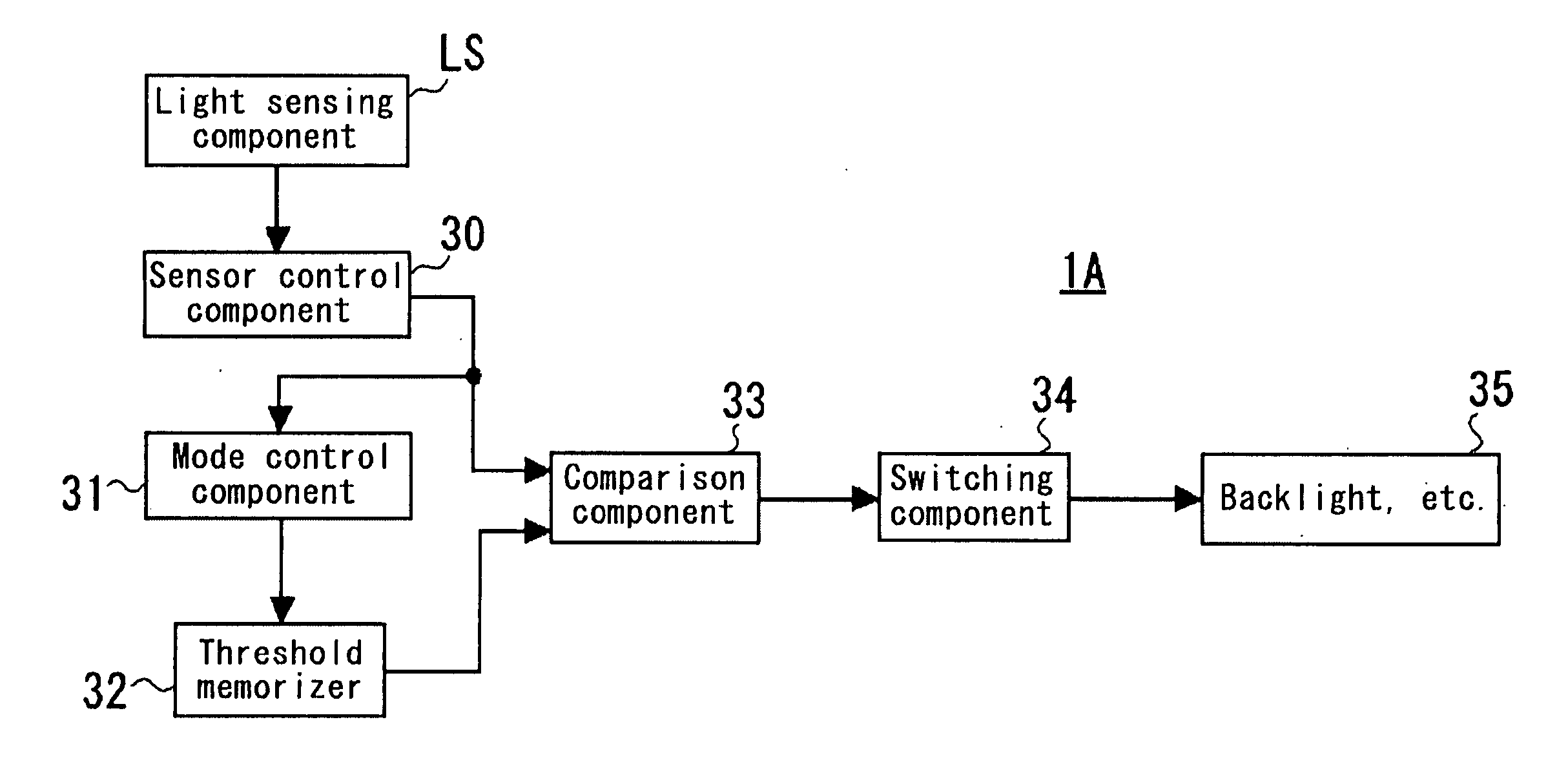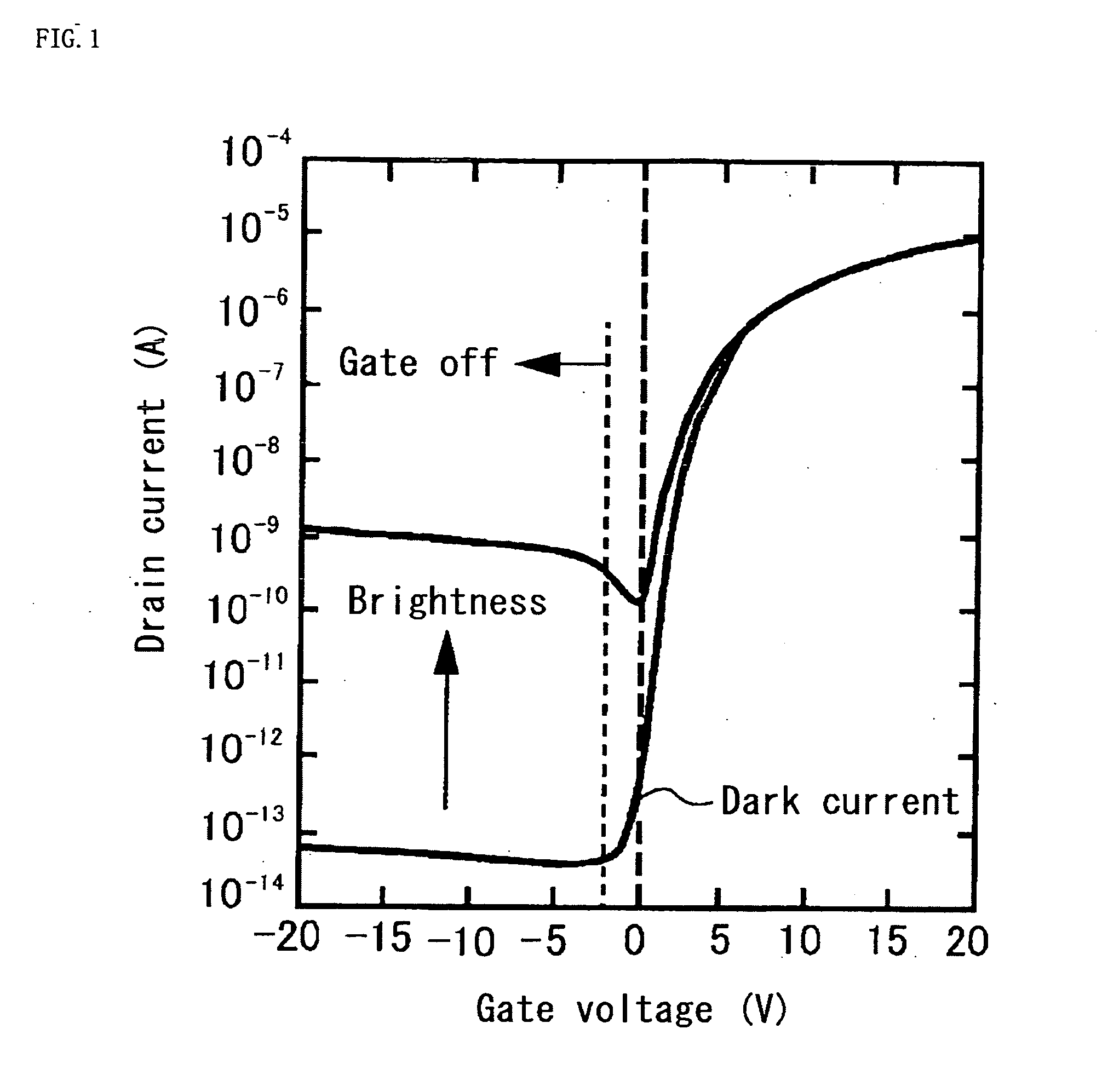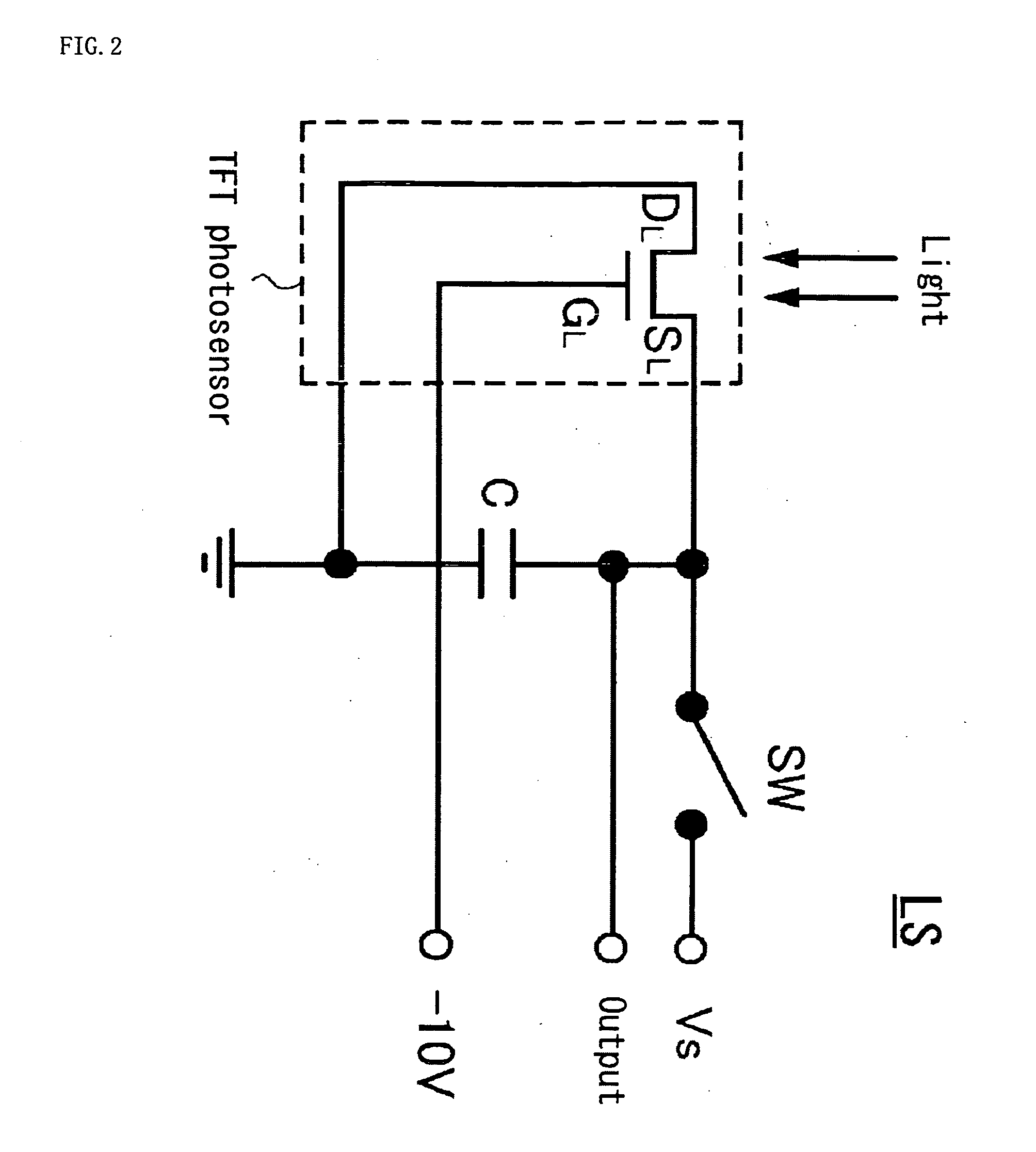Liquid crystal display device
a display device and liquid crystal technology, applied in the field of liquid crystal display devices, can solve the problems of increasing wasteful power consumption, poor visibility in dark places such as room interiors, and battery depletion early, and achieve the effects of accurate control of illuminating means, small fluctuation in the output of photosensors, and increased fabrication time and work
- Summary
- Abstract
- Description
- Claims
- Application Information
AI Technical Summary
Benefits of technology
Problems solved by technology
Method used
Image
Examples
embodiment 1
[0075] A semi-transmissive liquid crystal display device, incorporating a photosensor, of a first embodiment of the present invention will now be described with reference to FIGS. 4 and 5. FIG. 4 is a planar view illustrating schematically the active matrix substrate seen through the color filter substrate in the liquid crystal display device, while FIG. 5 is a cross-sectional view along line V-V in FIG. 4.
[0076] As shown in FIG. 5, a liquid crystal display device 1 has a structure whereby a liquid crystal layer 14 is formed between on the one hand an active matrix substrate (“TFT substrate” below) 2 which is composed of a transparent material with insulative properties, such as glass, and on whose surface a thin film transistor (TFT) or similar is mounted, and on the other hand a color filter substrate (“CF substrate” below) 25 on whose surface color filters or similar are formed.
[0077] In the display area DA of the TFT substrate 2, gate wires 4 and source wires 5 are formed in a...
embodiment 2
[0102] Although in the foregoing embodiment 1 the standard voltage VS charged into the capacitor C was voltage of a specific level, it is possible to vary such voltage with the frame periods. Accordingly, embodiment 2 of the present invention which will now be described is a liquid crystal display device 1′ in which two standard voltages are provided for charging of the capacitor C. The basic structure of the liquid crystal display device 1′ of embodiment 2 is the same as that shown in FIGS. 1 to 8 and FIG. 10 for embodiment 1, and differs from embodiment 1 only in the circuit configuration and the operating states of the light sensing component entailed by such circuit configuration, shown in FIG. 9. Below therefore, items that are structurally similar to those in embodiment 1 are referred to with the identical reference numerals and the foregoing descriptions concerning them are to be understood; the following description deals only with the structural differences from embodiment ...
PUM
 Login to View More
Login to View More Abstract
Description
Claims
Application Information
 Login to View More
Login to View More - R&D
- Intellectual Property
- Life Sciences
- Materials
- Tech Scout
- Unparalleled Data Quality
- Higher Quality Content
- 60% Fewer Hallucinations
Browse by: Latest US Patents, China's latest patents, Technical Efficacy Thesaurus, Application Domain, Technology Topic, Popular Technical Reports.
© 2025 PatSnap. All rights reserved.Legal|Privacy policy|Modern Slavery Act Transparency Statement|Sitemap|About US| Contact US: help@patsnap.com



